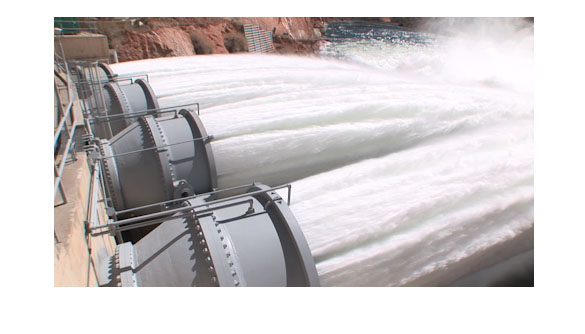PAGE – The Bureau of Reclamation will increase water releases from Glen Canyon Dam beginning on Monday, November 7, 2016 to support a high flow experiment (HFE) in partnership with the National Park Service, U.S. Fish and Wildlife Service and U.S. Geological Survey. This high flow experiment will include a peak magnitude release of approximately 36,000 cubic feet per second (cfs) for 96 hours to move accumulated sediment downstream to help rebuild beaches and backwater habitats. The decision to conduct this HFE was made following substantial consultation with Colorado River Basin states, American Indian tribes and involved federal and state agencies.
Reclamation and National Park Service officials remind recreational users to use caution along the Colorado River through Glen and Grand Canyons during the entire week of November 7. Flow level information will be posted at multiple locations in both Glen Canyon National Recreation Area and Grand Canyon National Park. Note that it will take several hours following the beginning and end of the HFE for high flow waters to reach and then recede at downstream locations in the canyons.
High flow experiments benefit the Colorado River ecosystem through Glen and Grand Canyons by moving sand in the river channel and re-depositing it in downstream reaches as sandbars and beaches. Those sandbars provide habitat for wildlife, serve as camping beaches for recreationists and supply sand needed to protect archaeological sites. High flows may also create backwater areas used by young native fishes, particularly the endangered humpback chub.
The HFE will not change the total annual amount of water released from Lake Powell to Lake Mead. Releases later in the water year will be adjusted to compensate for the high volume released during this high flow experiment.
Additional information about this high flow experiment will be posted and updated online at: http://www.usbr.gov/uc/rm/gcdHFE/index.html.





